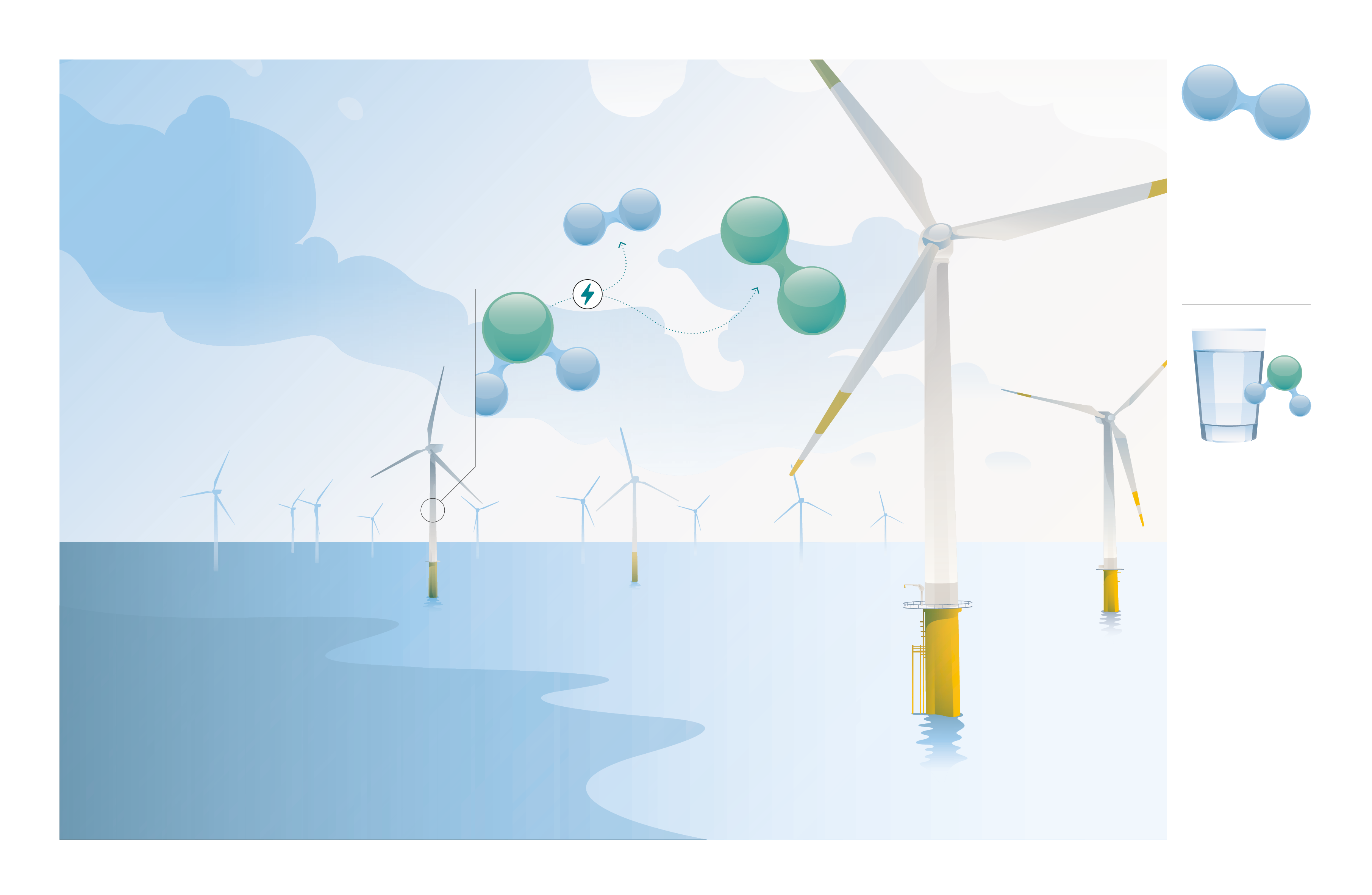
Solution
Production of green hydrogen of seawater
The production of green hydrogen through the electrolysis of seawater has become a lot more economically attractive. Wageningen scientists have proven with a pilot plant that it is possible to extract the Ultra-Pure Water (UPW) from seawater. The energy for that process comes from the residual heat of the electrolyser.

Hydrogen: why
In the electricity grid, supply and
demand must be balanced. No electricity must be ‘thrown out’: that’s the law
of conservation of energy, Ein = Eout. So when offshore wind energy production exceeds demand, wind turbines have to be shut down – unless the energy surplus can be used for electrolysis. Then the electric current is used to split the compound water (H2O) into oxygen O2, and hydrogen H2, an energy carrier. In the process, about 20-25% of the electricity is converted into heat, which is otherwise usually lost. Electrolysis requires Ultra-Pure Water (UPW), water without the carbonate and magnesium and calcium ions that are still present in demineralized water. The best-known methods for extracting UPW from seawater are reverse osmosis and membrane distillation.
1 Membrane distillation
is a separation process in which two
aqueous solutions at different temperatures are separated (by
evaporation and condensation) via a microporous hydrophobic
membrane that is gas-permeable. The success of the pilot plant
brings several plusses with it:
- No chemical pre-treatment of seawater required.
- The salt content of the residual seawater is not much higher
than seawater. - Energy-efficient: residual heat from the electrolyser is (pretty
much) the only source of energy for the membrane distillation. - Ultra-Pure Water as valuable surplus yield: the residual heat
from the electrolyser can be used to produce 3 times more UPW
than is needed for electrolysis.
2 Reverse osmosis
demineralizes seawater by pushing it through a very fine membrane under high pressure (around 80 bars). The chief disadvantages of this production method for Ultra-Pure Water are that the seawater requires pre-treatment
with chemicals and the salinity of the ‘residual water’ is twice as high as that of seawater. Plus, it requires a lot of electricity.
Generated energy in 2030
The Netherlands wants to
generate 21 gigawatts of offshore
wind energy by 2030, which
is about 75% of the country’s
electricity consumption.
Hydrogen
(officially: dihydrogen) is an energy conductor. The energy is released by creating a controlled reaction with
oxygen via a fuel cell, with water and heat as the only emissions:
2 H2 + O2 = 2 H2O. That water can be reused.
Surplus yield
The principles of the trial can also be applied onshore, and using ‘surplus’
solar energy. This could be particularly valuable in the summer, when solar farm
production peaks at the same time as demand for freshwater. The surplus
Ultra-Pure Water yield that is not needed for electrolysis can be used for horticulture or drinking water.
Project SEA2H2
This project is part of Wageningen Food & Biobased Research’s work on Water
Technology for the Energy Transition. It is headed by Jolanda van Medevoort and
is part of the Water Treatment and Technology programme led by Irma Steemers-Rijke.